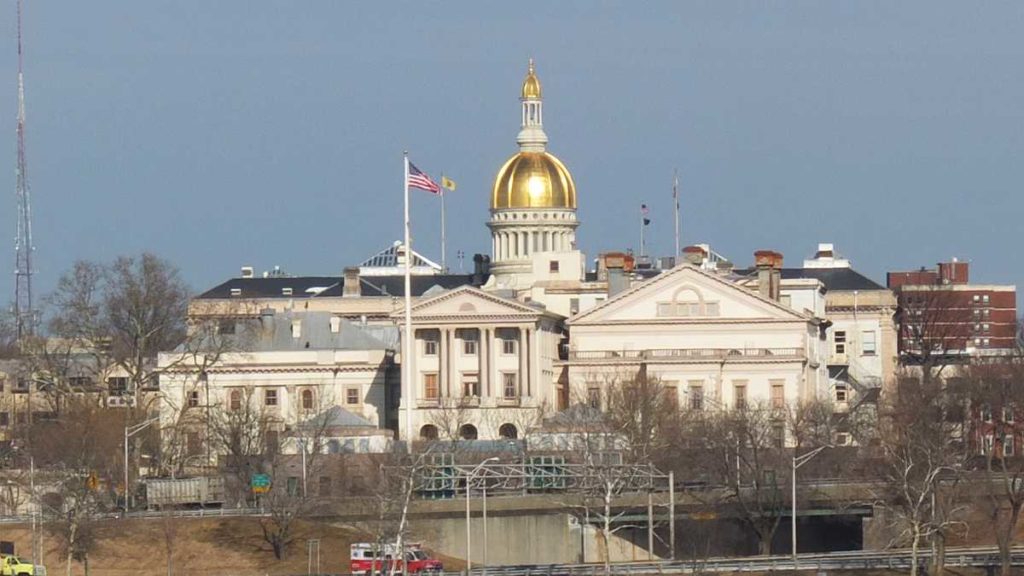Peters, Howarth introduce ‘Property Taxpayer Protection Amendment’ to end state diversion of property tax relief funds

Peters, Howarth introduce ‘Property Taxpayer Protection Amendment’ to end state diversion of property tax relief funds
Amendment would restore $368 million in property tax relief aid
TRENTON – Nearly $1 billion dollars in property tax relief has been diverted from municipalities to balance the state’s budget since 2002.
New Jersey 8th District Assemblymen Ryan Peters and Joe Howarth introduced a constitutional amendment (ACR-176) on Monday to end the practice once and for all.
“We have the highest property taxes in the nation,” said Peters (R-Burlington). “You don’t get stuck in a hole this deep without doing a lot of digging, and for years, state politicians have been taking a backhoe to two of the most important revenue funds that municipalities have.”
The Energy Tax Receipts Property Tax Relief Fund (ERT) and Consolidated Municipal Property Tax Relief Aid (CMPTRA) are two of the biggest sources of revenue for municipalities aside from property taxes. The funds were set up to collect taxes on utility companies that use township right of ways, local businesses and other municipal revenue sources.
The “Property Taxpayer Protection Amendment” would lock down the two revenue sources, making it so Trenton politicians can no longer use them to balance the state’s budget.
The amendment would alter the Constitution of the State of New Jersey to make it so both programs are fully funded as intended, while restoring CMPTRA funding to the level it was at in 2009, before Governor Chris Christie slashed it in half. The 2009 levels would also be adjusted for the current year’s inflation rate.
Replenishing CMPTRA levels to 2009, plus inflation, would cost the state about $384 million. The municipal relief fund has an estimated 2019 allocation of about $263 million, compared to a decade ago when it was at about $631 million.
“These two programs were always meant to be property tax relief generators for municipalities. Once the state started skimming off the top of them to satisfy its own budget, it never stopped,” said Howarth (R-Burlington). “We’re trying to end a shell game that’s been played for years with the property taxpayer being the loser every time.”
The proposal by Peters and Howarth would put a stop to years of accounting tricks played with CMPTRA and ERT to make sure the taxpayer aid is distributed to municipalities as originally intended.
The taxes that make up the two funds were once collected by municipalities, but in the 1990’s, the state set up ERT and CMPTRA to provide year-over-year stability with the promise to distribute the money back to towns. Instead of following through with its promise, the state started using the money for its own expenses, being able to skirt the laws of ERT and CMPTRA through budget language.
In 2002, a poison pill was enacted for ERT that would revoke the state’s right to collect the taxes if it failed to distribute to municipalities the same amount as the previous year plus annual inflation. The same poison pill was not enacted for CMPTRA. This led to a yearly shell game of the state taking funds from ERT and replenishing it with funds from CMPTRA so it wouldn’t reach ERT’s poison pill limit.
“It seems to me that politicians have been giving towns property tax relief with one hand and taking away with the other,” Howarth said.
Since 2002, the practice of taking from CMPTRA to replenish ERT has left taxpayer relief aid nearly $1 billion short of where it would be today if the state never touched it and it increased with inflation. The exercise hit a fever pitch from 2009 to 2011 when Gov. Christie slashed CMPTRA by about $366 million.
“There will always be something new the state will justify using this money to pay for, when it should be focused on the tax burden that’s piled high on the backs of New Jersey families and businesses,” Peters said. “This is something mayors from around the state have called for, and everyone can see it’s sorely needed.”
Under the “Property Taxpayer Protection Amendment” the state would not only have to replenish 2009 CMPTRA level, but also match it each year going forward plus annual inflation.
While funding for ERT has not gone down, the amendment also states that its funding would similarly have to match previous year funding levels plus annual inflation.
Adding a safeguard to ERT and restoring CMPTRA to 2009 levels would fulfill a request made by the New Jersey League of Municipalities for the last several years.
Property Taxpayer Protection Amendment







